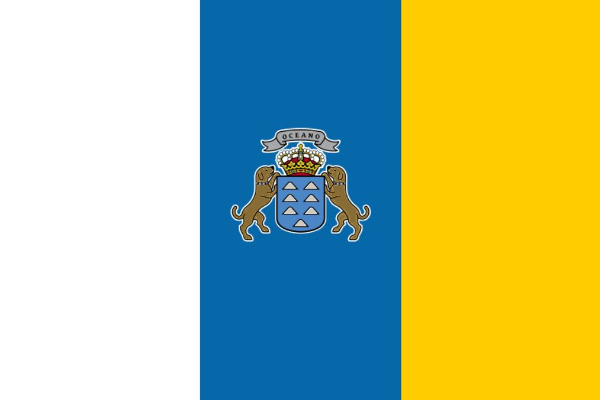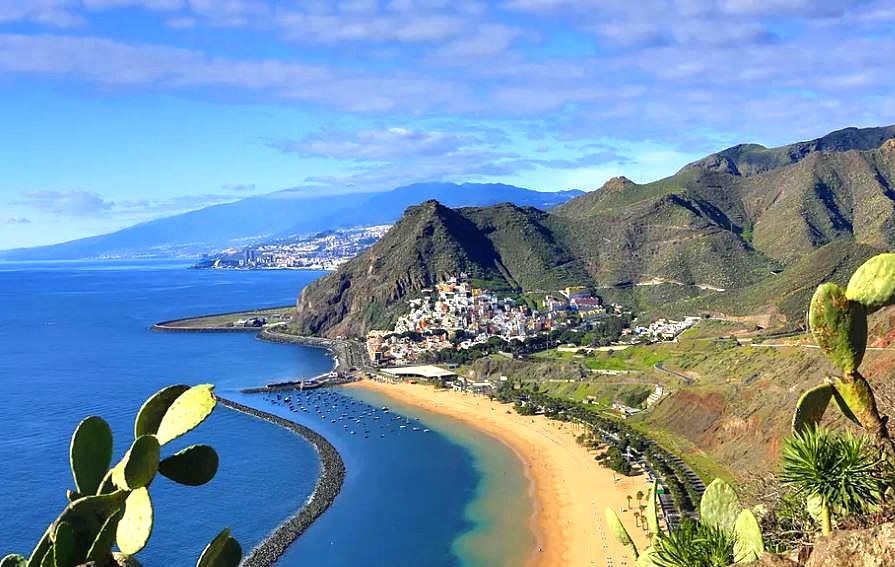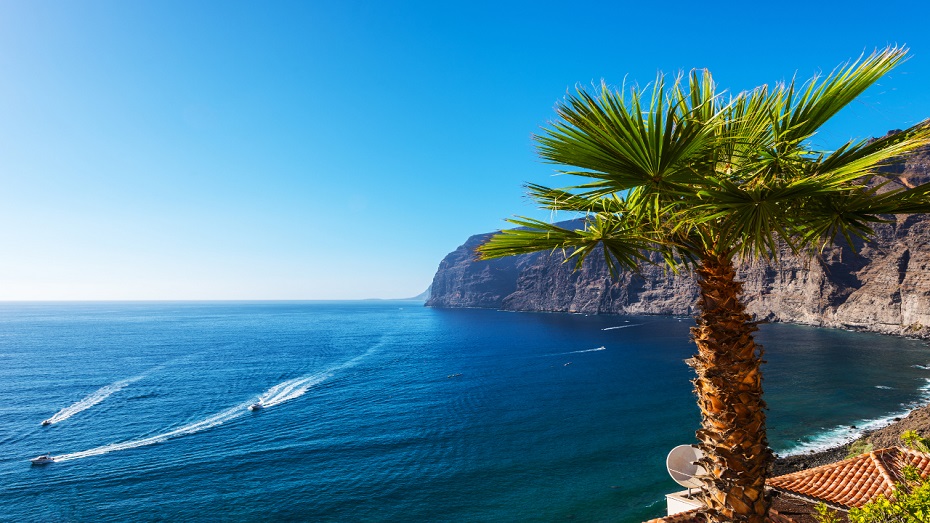
Canary Islands
Area available all year round near Europe
Seven major islands and six smaller islands form the archipelago of the Canary Islands, west of the African coast.
The mild, subtropical climate makes these Spanish islands very popular for being a holiday destination for water sports the whole year long. The volcanic origin of these islands is responsible for the unique landscape and the breathtaking flora and fauna.
Sailing paradise Canary Islands
- Tenerife
- Fuerteventura
- Gran Canaria
- Lanzarote
- La Palma
- La Gomera
- El Hierro
The name of the entire archipelago comes from the main island of Gran Canaria. In the streets of the capital of the island Las Palmas, on the large urban beach Las Canteras and on the long seaside promenade with numerous cafes and restaurants, young and old meet. The city port is one of the largest in the Atlantic and is part of the city panorama. The official language of the entire archipelago, which is politically part of Spain, geographically part to Africa and biogeographically part of Micronesia, is Spanish. About 70% of the gross domestic product gets generated from Tourism.
- Capital: Las Palmas
- Area: 1.560,1 km²
- Holidays: 30. May
- Airports: Gran Canaria, Fuerteventura, Lanzarote, Teneriffa, La Gomera & El Hierro
- Currency: Euro
- Population: about 2,1 million (2016)
- Area code: 0034
Special features of the Canary Islands
Fantastic holiday on a yacht in the Canary Islands
The easiest way to get to the Canary Islands is by plane. From many major airports charter carriers offer cheap direct flights, predominantly to Gran Canaria, Tenerife and Lanzarote.
An alternative might be a ferry trip transporting also your own car from mainland Spain. In addition to the main island of Gran Canaria, Tenerife attracts attention with its beaches, cliffs and impressive mountain ranges. Inland of Tenerife you can find the highest mountain of Spain, Pico del Teide ( 3.718m) with a spectacular volcanic crater. The picturesque little port cities of the islands surrounded by the Atlantic Ocean enchant with their small streets and promenades marked by the warmth of the sun and sometimes heavy winds.
Holiday recommendations
Our tip: a week on each island
The beauty and diversity of the Canary Islands can not be experienced during one week. It's better to get to know the area step by step, one island after the other.
The largest island in the Canary Islands, Tenerife, has also the largest number of marinas, followed by Gran Canaria, Fuerteventura and Lanzarote. Island-hopping is the best way to see the three "smaller" Canary Islands during a sailing trip with your chartered yacht. Often there is a strong wind on the islands, so this area is not recommended for beginners. Due to the massive swell, there are only a few safe anchor bays, what why we always recommend you to book a mooring space in one of the many well-equipped marinas for your overnight stays. Especially in autumn there are many sailors on the Canary Islands, as they embark from here for a long journey and dare to sail across the Atlantic to the Caribbean in calm weather. Regatta specialists and people sailing around the globe characterice the daily life in these ports, especially in Gran Canaria, giving the atmosphere a unique charm.
Sailing and cruise routes
Guaranteed wind all year round
On the Canary Islands, which are situated westward of Africa - at the same latitude as Morocco - it is warm all year round. The islands benefit from the Azores High. But between the low barometric pressure over the Sahara and the high air pressure on the Atlantic Ocean, this often creates a powerful northeast current, which manifests itself in crisp gusts with up to 8 degrees on the Beaufort scale.
Since the prevailing wind conditions can be very inconsistent, shortly after you have reefed the sails and put on the oil jacket, you have already sailed out of the strong wind and you plod along, accompanied by a few big rolling waves. If you love sailing in all its facets, then you will enjoy sailing in this area, especially when the wind forms some white foam on the deep blue water. All of a sudden this windy situation changes completely and it is calm and you can jump into the approximately 22 degrees warm water in order to refresh yourself.
With a little luck, whales and big sea turtles can be also seen between the islands.
Weather conditions
Climate, wind and weather in the Canary Islands
"The islands of eternal spring” - also so-called are the Canary Islands. Trade winds determine the weather on these islands west of the African coast, which guarantees good weather with perfect tropical climatic conditions for almost a whole year. During the summer months it gets quite hot, the winter months are perfect for many Europeans leaving the European continent for a sunny, warm holiday. Full sun and almost always (cool) wind helps you getting out of your winter depression! There are slight climatic differences between the northern and southern islands: the North is located windward of the trade winds, so dark clouds and rainfall appear more often than in the South.
Air and water temperatures at a glance
January: air 20 ° - water 19 °
February: air 21 ° - water 18 °
March: air 22 ° - water 18 °
April: air 23 ° - water 18 °
May: air 24 ° - water 19 °
June: air 26 ° - water 20 °
July: air 28 ° - water 21 °
August: air 29 ° - water 22 °
September: air 28 ° - water 23 °
October: air 27 ° - water 22 °
November: 23 ° - water 21 °
December: 21 ° - water 20 °





















